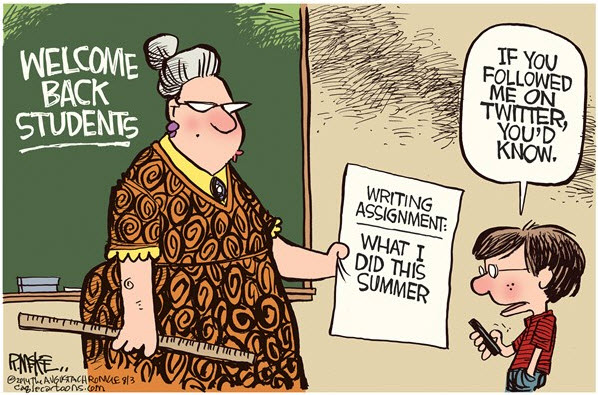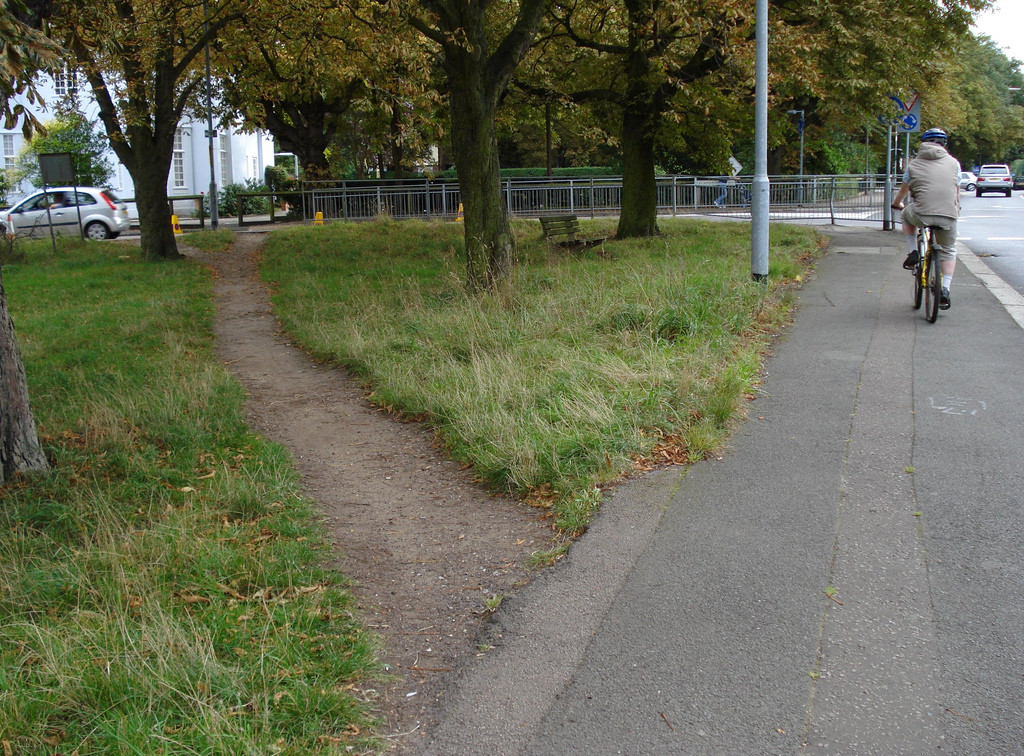At last year’s Georgia Learns Technology Summit 2014 I was asked to succinctly explain what I did as a Learning Strategy Manager (LSM). My on-the-fly response was that “my main goal is to find ways to remove the friction in learning.” Since last year’s summit, I’ve carried that theme with me throughout my work. I’ve tried to define a process and criteria for “frictionless learning.” At this year’s conference, I gave a 15-min talk on “frictionless learning” and what I’ve learned so far.
What is frictionless learning?
The cartoon above illustrates exactly what I mean by frictionless learning. Frictionless learning is aquiring knowledge in ways that are convenient to the current environment and circumstances. As a LSM, I focus on finding ways eliminate the barriers and static in learning experiences.
How do you create frictionless learning experiences?
Once a learning need has been identified, I always start by trying to find the beaten path for learning. I immerse myself in the learners environment so I understand their experience. This helps me figure out how to design an experience that is seamless to how they work. I look for the beaten paths of learning to understand the subtle differences between theory and practice. Immersing myself also helps me validate assumptions around knowledge gaps.
My approach…
Taking time away from work usually causes the most friction in learning because it is often not available at the time of need and retention degrades over time. Although, I design a lot of WBT and ILT, I look for other solutions first. Here are some things I consider when developing a new learning experience.
- Am I trying to teach or am I trying to tell something?
The line between communications and learning is often blurred in the corporate environment. This is often because companies use their LMS for track receipt of information. Think company policy training. In many cases a performance or behavior change is not the desired outcome. This sort of training is often just a way to create awareness of a policy, and “required training” is more effective than sending an email. So, why is it important to determine if I am telling or teaching something. If I determine that I simply need to tell the learner or employee something I can focus on a communication plan and finding the time-of-need places to link to the information instead of developing a learning intervention. - Can my audience learn this and are people in my audience already learning this someplace else?
There is no reason to reinvent the wheel. This is a important part of following the beaten path. I work to understand what my audience is already doing to acquire the required knowledge related to the performance expectations. - What will happen if we don’t teach this concept?
Sometimes, especially in corporate learning there is this feeling that you only get once chance in front of the learners, and so you gotta cover everything. This feeling is usually driven by the fact that time away from performing normal job duties is precious and limited. With that said, we all know that people have limited attention spans and there is only so much a person can learn and retain over a given period, so why waste the effort training someone on something you know they are not going to retain? I slash content by simply asking what will happen if we don’t teach it and I let the consequences dictate the curriculum. With that said, I think the ideal learning solution is usually a combination of a learning experience that teaches the “need to know” concepts such as where to get help, coupled with intuitive and easy to access knowledge management and performance support tools. I think of this as teaching people how to fish and making sure there is a pond for them to fish in. - Will the learner apply the new knowledge immediately?
This is another question I ask to make sure that the final solution is delivered at the right time. Learning at the time of need is the sweetest spot to provide an intervention. It is one the essential ways to provide fricitonless learning experiences. Thus, by understanding when a learner will use the knowledge helps me determine when, where, and how to deliver the learning experience.
The above process is how I work through the analysis and design phase of a learning project. It is pretty simple but has helped me work to create “frictionless” learning. In my next post I will share some examples of what I think is “frictionless” learning.

